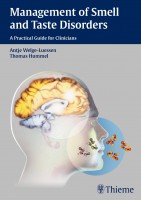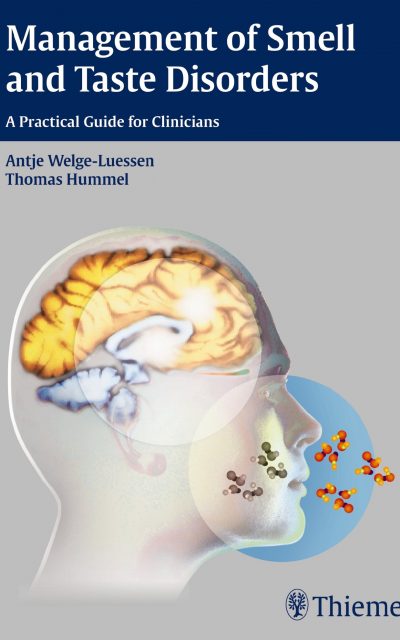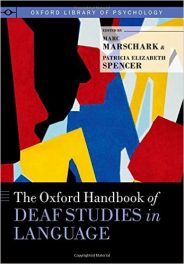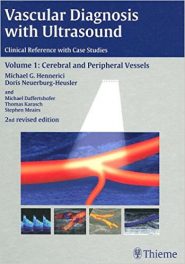 Editors: Antje Welge-Luessen and Thomas Hummel
Editors: Antje Welge-Luessen and Thomas Hummel
Publisher: Thieme – 240 pages
Book Review by: Nano Khilnani
This is a rare and an unusual book. There are just a few medical texts available on smell and taste disorders, their pathophysiology and their treatment. This is one of them. Smell and taste are essentially chemical senses that add to the quality of our lives. Imagine if you were born without the sense of smell, lost it sometime in your life, and you could not smell the aroma of various drinks and foods. Or worse, you could not taste any food!
Well, here’s something you probably do not know: as much as five percent of the general population is basically anosmic, or not able to smell. And the largest incidence of this disorder is among older people, the editors of this book point out.
The incidence of taste disorders is less common than of smell. No data is provided on it in this book, although the authors of chapter 15, Taste Disorders, Basile N. Landis and Josef G. Heckman, point out that they occur after laryngoscopy, stroke, temporal bone fracture, dissection of brain-supplying arteries, in celiac disease, or even as a para-neoplastic symptom.
After the introductory chapter 1 entitled Loss of Smell and Taste: Epidemiology and the Impact on the Quality of Life, the contents of this book are presented in two sections: Sense of Smell, and Sense of Taste.
I. Sense of Smell:
- Functional Anatomy of the Olfactory System I: From the Nasal Cavity to the Olfactory Bulb
- Functional Anatomy of the Olfactory System II: Central Relays, Pathways, and Their Function
- The Human Vomeronasal System
- Smell and Taste Disorders – Diagnostic and Clinical Work-Up
- Assessment of Olfaction and Gustation
- Sinonasal and Olfactory Disorders
- Post-infectious and Post-traumatic Olfactory Disorders
- Miscellaneous Causes of Olfactory Dysfunction
- Chemosensory Function in Infants and Children
- Neurological Diseases and Olfactory Disorders
- Clinical Disorders of the Trigeminal System
II. Sense of Taste:
- Functional Anatomy of the Gustatory System: From the Taste Papilla to the Gustatory Cortex
- Taste Testing
- Taste Disorders
- Burning Mouth Syndrome and Qualitative Taste and Smell Disorders
- Structural Imaging in Chemosensory Dysfunction
- Providing Expert Opinion on Olfactory and Gustatory Disorders
- Flavor: Interaction between the Chemical Senses
Thirty-nine medical specialists, mainly from Germany, but also from these countries – Australia, Belgium, Canada, Finland, Japan, Sweden, Switzerland, the United Kingdom, and the United States – authored the 19 chapters of this book.
Besides physicians and surgeons who focus on the diagnosis and treatments of disorders of the ear and nose, the writers of the chapters are also experts in anatomy; food, smell, and taste science; neurology; psychiatry; and psychology.
Material presentation is quite well organized in this compact book that is quite packed with a lot of information available in text and visual form. Let’s take a look for example at chapter 6, Assessment of Olfaction and Gustation.
Just below the bylines of the authors of this chapter – Thomas Hummel, Cornelia Hummel, and Antje-Welge-Luessen, a short summary is presented, to give you the gist of what’s discussed in this particular chapter.
The summary states that smell disorders are found basically by simply interviewing the patients, and typically up to six percent of them exhibit anosmia or the inability to smell. But structural diagnostic procedures including psychophysical instruments are used to measure and record findings. Imaging and immunohistochemical biopsy evaluation methods are also used. The two common imaging methods used are:
- Volumetric assessment of the olfactory bulb
- Functional magnetic resonance imaging with gustatory or olfactory stimulation
The chapter presents discussions of various topics (such as on smell tests) with headings; every here and there a Note in a small box; photos of the chemicals used to check the ability of patients to identify different types of smells; a Table that specifies different types of smell disorders; and Charts that results of tests. There are also images of scans of different parts of the brain used in olfaction and gestation.
All in all, this is an excellent, highly informative text on smell and taste disorders.
Editors:
Antje Welge-Luessen, MD is with the Department of Otolaryngology at University Hospital – Basel in Basel, Switzerland.
Thomas Hummel, MD is with the Smell and Taste Clinic in the department of Otorhinolaryngology at the Technical University of Dresden in Dresden, Germany
Contributors:
Nasreeddin Abolmaali, MD
Victor Ching, BScN
Michael Damm, MD
Terence M. Davidson, MD, FACS
Ron DeVere, MD, FAAN, FAADEP
John E. Duda, MD
Joel Epstein, DMD, MSD, FRCD (C), FDS, RCS (Edin)
Johannes Frasnell, MD
Jessica Freiherr, PhD
Miriam Grushka, DDS
Antje Haehner, MD, PhD
Josef G. Heckman, MD
David E. Hornung, BS, MS, PhD
Cornelia Hummel, MD
Thomas Hummel, MD
Tino Just, MFD
Robert C. Kern, MD, MS, FACS
Tatsu Kobayakawa, PhD
David G. Laing, PhD
Basile N. Landis, MD
Donald A. Leopold, MD
Rany M. Leung, MD, FRSC
Michael Meredith, PhD
Takaki Miwa, MD, PhD
Axel Muttray, MD
Steven Nordin, MD
Hishasi Ogawa, MD, DMSc
Carl Philpott, MB ChB, FRCS (ORL-HNS), DLO, MD, PGCME
Nancy E. Rawson, PhD
Philippe Rombaux, MD, PhD
Masafumi Sakagami, MD, PhD
Benoit Schaal, PhD
Dennis Shusterman, MD, MPH
Dana M. Small, PhD, MSc
Boris A. Stuck, MD
Hely Tuorila, PhD
Antje Welge-Luessen, MD
Martin Weismann, MD
Martin Witt, MD







